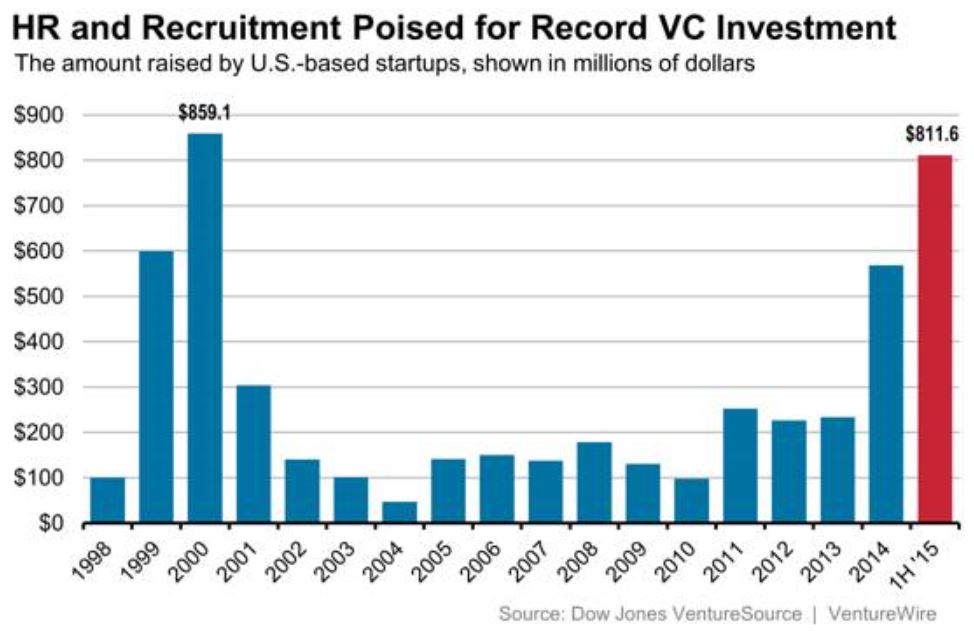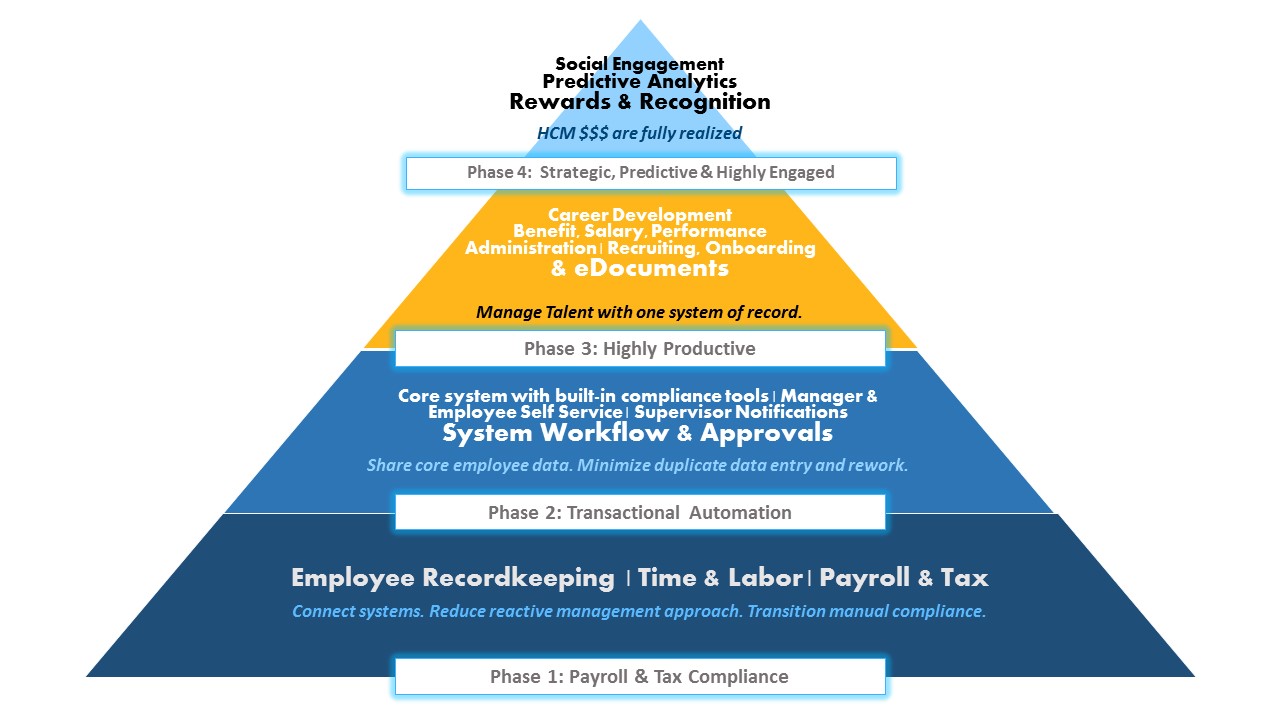There is a buzz now about Employee Engagement in all industries. Thought leaders in Human Resources are centered on the idea that engaged employees are more motivated, effective, and productive, and therefore can do more with less.
And that sounds like a good thing—doesn’t it? I want that. You want that. We all want that.
As a HR software executive, it’s no secret that I have a keen interest in all things Human Resource related and especially those that have the potential to change the way that employees’ are engaged. But what does Employee Engagement really mean? And how do we know when we’ve achieved Employee Engagement? Of course there are companies who provide nap rooms, free meals, and onsite daycare, but are the freebies the key to Employee Engagement? Those are nice perks, but is it really necessary to go over the top with giveaways to employees to get them engaged? Those questions are what I’ve decided to explore.
To begin, I needed a solid working definition of Employee Engagement. While I have heard the term itself for more than a decade, it often is used with varying meanings. It was surprisingly difficult to find a definition that focused on what the employer can do and what the results of Employee Engagement are. So, for the purposes of this blog, I created this definition of Employee Engagement:
Employee engagement is leadership communicating strategy and embedding goals to a receptive, motivated, and well-recognized workforce who in turn creates customer loyalty and satisfaction resulting in exceptional business results.
As my definition suggests, my thoughts on encouraging engagement do not involve giveaways and freebies but rather they center on leadership behaviors.
Principle 1—Good leaders communicate with their employees.
A good leadership team articulates strategic objectives and promotes processes that successfully embed those goals at every level of the organization. The idea here is that managers align goals to specific objectives for each of their direct reports and, at the same time, allow employees to participate in the strategy and planning related to achieving their assigned individual, team, and organizational goals.
Employees must clearly understand what they are supposed to do and what success means to them individually and as a team. They also need know the organization’s goals and more importantly what the organization stands for so they can be aligned with its intentions. This is important so they can reinforce and promote its culture inside and outside of work. Some organizations, such as Southwest Airlines, go so far as developing and promoting compelling customer service stories that intentionally embody and reinforce their culture and customer service philosophy.1 Those of us that have enjoyed Southwest’s unique style of customer service have witnessed how well this philosophy has worked for them.
Principle 2—Empower employees to do the right thing.
Providing an environment where employees are able to exercise judgment in doing their day-to-day jobs is a must-have for an empowered workforce. It’s not enough for your managers to provide leeway for direct reports to do their jobs effectively and efficiently. Employees must feel safe in taking calculated risks, possibly breaking the rules, so long as those decisions result in serving customers better. Top managers and executives must be receptive to upward feedback. Good ideas cannot be ignored. When procedural or system changes are necessary to improve efficiency, accuracy, or customer service, your Engaged Employees should be leading this effort.
One caveat…while encouraging empowerment behaviors, emphasis should be maintained that employees are still responsible for maintaining direct and frank communication with their supervisors and keeping them in the loop at all times. An empowered employee is not an unsupervised employee.
Principle 3—Happy employees are positive and strive to do their best.
How happy are you? Thirty years ago, an employer would not likely ask that question. Today it is more common since happiness has been linked to productivity, so measuring and promoting happiness has been gaining favor with Human Resource practitioners. Tony Hsieh, the CEO and founder of Zappos.com, is going so far as to develop his own “Unified Happiness Theory.” 2 Tony may be uniquely qualified to undertake such a task since his book, Delivering Happiness: A Path to Profits, Passion, and Purpose is a #1 book on the New York Times© Best Seller list.
Happiness is the most subjective of my four Employee Engagement principles, but I have seen that it is an important one. Happy employees are positive employees that strive to do their best work. Here, we are focused on getting employees well-placed in their roles with a good sense of purpose and meaning for the job they do. Employees must be given the needed training and tools to be successful. They also need to be satisfied with their work environment and compensation. It is essential to foster participation in collaborative teams where all are invested in the successful outcomes of the team and are regularly communicating, sharing information, and sharing knowledge.
Happy employees routinely speak highly of the organization to coworkers, potential coworkers, and customers. Surveys are good tools in checking your organization’s progress in this area. Of course, the ultimate test of happiness is retention. If your organization has a retention problem, then you likely have some work to do on the happiness front.
Principle 4—Team recognition keeps the team spirit alive and well.
Teamwork is the most important aspect to high productivity: http://richardcangemi1.com/?p=89.
People naturally gravitate toward teamwork, but when the reward system is improperly designed teamwork is quickly snuffed out. Teamwork thrives when recognition is evenly and fairly distributed to all contributors.
Good coaches instinctively listen and recognize players’ contributions. They know that those coaching behaviors foster a loyal, motivated, and productive team environment with individuals working toward a common goals that are aligned to make the team successful. A winning football team’s quarterback and running backs naturally receive recognition as they are performing in highly visible positions. The same goes for salespeople and product engineers since they are recognized by virtue of the exposure that the job that they do affords them. Good coaches and managers fairly share successes with all contributors so everyone is recognized for the outcome of the team effort. Shared recognition is what keeps team spirit alive and well.
My four principles of Employee Engagement are simple enough. It is an elusive but worthwhile goal since achieving the kind of Employee Engagement that results in exceptional business results is easier said than done. Good luck!
Footnotes
1 Kelly, Gary, “Gary’s Greeting: Happy Holidays!,” Spirit, Dec. 2013, http://www.southwest.com/assets/pdfs/about-southwest/garys-greeting.pdf (accessed 10 Dec. 2013).
2 Max Chafkin, “The Zappos Way of Managing,” Inc., 1 May 2009, http://www.inc.com/magazine/20090501/the-zappos-way-of-managing.html (accessed 6 Dec. 2013).
 Regardless of party affiliation or politics, the first 100 days of the any new presidential administration are expected to bring change. The Trump administration is no different in that regard. He has made promises to voters and has gone as far as presenting a contract with America. With the Republican party controlling both the house and the senate, the Trump Administration has a good chance of executing on some of its promises in its first 100 days’ plan.
Regardless of party affiliation or politics, the first 100 days of the any new presidential administration are expected to bring change. The Trump administration is no different in that regard. He has made promises to voters and has gone as far as presenting a contract with America. With the Republican party controlling both the house and the senate, the Trump Administration has a good chance of executing on some of its promises in its first 100 days’ plan.
 Billions of dollars invested in HR technology companies have created a handful of new and reborn one-size-fits-all HCM vendors who made a big splash on the HR scene throughout 2015 and 2016. Not to be outdone, niche HR specialist vendors have upped the ante with some very compelling niche products targeting recruiting, performance, learning, compliance, and social collaboration. Choice is always a good thing for HR departments. How does all this investment in HR technology companies change the way HR executives think about using technology within their operations?
Billions of dollars invested in HR technology companies have created a handful of new and reborn one-size-fits-all HCM vendors who made a big splash on the HR scene throughout 2015 and 2016. Not to be outdone, niche HR specialist vendors have upped the ante with some very compelling niche products targeting recruiting, performance, learning, compliance, and social collaboration. Choice is always a good thing for HR departments. How does all this investment in HR technology companies change the way HR executives think about using technology within their operations?  HR Cloud 9 is being in a state of perfect contentment with your HR ecosystem. Getting to HR Cloud 9 isn’t a trivial matter, and it isn’t about choosing one vendor to handle everything. The choices you make when building out your HR ecosystem will either form your utopia or nightmare. To get to HR Cloud 9, consider how your ecosystem will fair in the following areas. If you do, you’ll be well on your way to Cloud 9.
HR Cloud 9 is being in a state of perfect contentment with your HR ecosystem. Getting to HR Cloud 9 isn’t a trivial matter, and it isn’t about choosing one vendor to handle everything. The choices you make when building out your HR ecosystem will either form your utopia or nightmare. To get to HR Cloud 9, consider how your ecosystem will fair in the following areas. If you do, you’ll be well on your way to Cloud 9.
 It’s really not about ageism. It is simply that a great attitude and passion to succeed trump years of experience and perfect qualifications nearly every time.
It’s really not about ageism. It is simply that a great attitude and passion to succeed trump years of experience and perfect qualifications nearly every time.